MARYSVALE, UTAH — Vancouver-based exploration company Western Pacific Resources (TSXV: WRP) is adding a new project to its portfolio with the acquisition of the Deer Trail mine, a polymetallic project with silver, gold, zinc, lead and copper that has a history spanning over 130 years.
Located in Piute County, Utah, about a three-and-a-half-hour drive south of Salt Lake City, the site has been a mining landmark since its discovery in 1878, when deer hunters observed gold and silver mineralization at surface. A mine was developed shortly thereafter and has remained in production for most of its history, with relatively few breaks — the most notable being a 12-year hiatus during the commodity bear market of the 1980s.
Western Pacific signed a deal to acquire the project in February 2013, after negotiating for almost a year with the now-defunct Unico Inc., a San Diego-based mining company that was in disarray while former president and CEO Mark Anthony Lopez was under investigation by the U.S. Securities and Exchange Commission for a US$28-million stock fraud.
In January 2013 federal prosecutors charged Lopez with conspiracy, as well as obstruction of justice, after he allegedly refused to turn over emails relating to the investigation. (Lopez faces up to 65 years in prison and US$750,000 in fines if there is a conviction.)
Amidst all the uncertainty, negotiations with Unico were difficult for Western Pacific’s CEO Warwick Smith, but he made a last-ditch effort to buy the project after many of the mine’s other suitors had given up. “There was a lot of cussing and swearing coming out of my office for the 11 months I was trying to get the deal done,” Smith says. “It was a hell of a challenge.” Despite the difficulties, Smith persuaded the Unico board to sell the property for $7 million, free of any liabilities relating to the ongoing investigation.
Western Pacific must pay Unico the full amount over 2.5 years, including $1.8 million in cash on closing on Oct. 31; the transfer of Western Pacific’s Bombardier property, which is valued at $1.5 million; $2 million in cash 12 months after closing; and $1.7 million in cash 30 months after closing. Payments may be accelerated if commercial production is achieved early. The mine has a 5% net smelter return royalty on gold production due to Crown Mines.
On-site assets include a mill complex built in the early 2000s, with a 250-tonne-per-day flotation mill, a crusher, an assay lab, a core-sampling facility and a small tailings pond below the mill. Most of the permitting is in place, and the company plans to expand the tailings pond and apply for a clean-air permit once the transaction is complete.
Western Pacific’s vice-president of exploration Eric Saderholm explains how the deposit changes in character with depth. “The upper mine is oxide, but it’s mainly gold and silver. As you move down into the guts of the system, around the 3,400-foot depth, you start to get into more lead and more zinc, but we’re seeing that there’s gold there, too.”
Saderholm previously worked as Carlin trend exploration manager for Newmont Mining (TSX: NMC; NYSE: NEM) in Nevada and served as vice-president of project development at US Gold from 2006 to 2008. He believes that production from the last 130 years derived from the mantos, or distal fingers, extending from a much larger porphyry deposit. “As you move down towards the porphyry, you’ll pick up another gold zone — a copper-gold skarn — where you pick up another gold zone. So, you make money on just about every metal there. There’s a fair copper credit, a lot of zinc, a lot of base metals and a real big silver punch.”
Although Western Pacific hasn’t begun drilling, recent samples from other work have yielded encouraging results, with highlights of 0.5 metre of 164.5 grams gold per tonne and 8,090 grams silver per tonne in the Lower Deer Trail mine, and 20.9 grams gold over 0.8 metre in the Upper Deer Trail mine.
Western Pacific recently acquired and released historic sampling results by Goldfields Mining Co. from 1987–1988 as well, which showed high-grade gold and silver at the Upper Deer Trail mine.
If the porphyry theory holds true, Smith believes Western Pacific may be on the verge of something big. “If you’re able to get to the end of these fingers and you’re towards this porphyry, then you’ve made a tremendous discovery. But you’re making money along the way, because you’re putting it back into production and you’re working your way towards an elephant, per se. This is similar to Bingham Canyon and Park City, which are all within a few hundred miles, and those are monster deposits, and this is exactly the way these all started. In a market like this, you need something like this, especially a small company like ours.”
Shortly after the acquisition, Hecla Mining (NYSE: HL) alumni Art Brown and Michael Callahan joined the team. Brown, who spent 39 years at Hecla, eventually serving as chairman and CEO before retiring in 2006, believes the economics of the project are favourable, even in a difficult market. “The ability to take this thing into production for a limited amount of money upfront and bring it into a cash-flow position so that you really grow the mine with cash flow, and don’t end up with a huge dilution, is important.”
Callahan, a former vice-president at Hecla, as well as former president of the company’s Venezuela operations from 2006 to 2009, is equally impressed with the project. “The land package is phenomenal here,” he says. “All of this equipment is relatively new. They built this mill and got it commissioned in 2008, and ran 500 tonnes through the mill — and it’s been on care and maintenance since then.”
Both men are familiar with the logistics of running a junior exploration company, having joined Silvermex Resources after their careers at Hecla. Brown served as chairman at Silvermex, while Callahan was president. After two years with the duo at the helm, Silvermex was bought out by First Majestic Silver (TSX: FR; NYSE: AG) in 2012 for $175 million. The same dynamic exists today, with Brown serving as chairman of Western Pacific and Callahan serving as president.
Smith couldn’t be happier with their arrival. “Getting the Deer Trail mine was huge for Western. Being able to get Mike and Art was the second part of the equation. We needed guys who knew how to run underground mines, who could come in and move this from being a small company to a large company.”
Part of the Deer Trail mine’s appeal is its infrastructure. The site is 2 km from Interstate Highway 89, and 8 km from Marysvale, a community with less than a thousand residents. Smith characterizes Piute County residents as engaged and supportive of the project. “The whole local community and everybody we’ve talked to has been incredibly helpful and really on side. That was a concern — the guys who were there before weren’t the greatest guys, and you don’t want to be painted with the same brush. For me that was a concern, but so far it’s been fantastic,” Smith says.
Smith recounts a conversation with a local politician who told him a workforce of 20 people would make Western Pacific “the largest employer in the county.” Smith adds that “Marysvale is in one of the poorest counties in Utah. These guys need the jobs.”
For now, the team is focused on securing the financing it needs to complete the acquisition.
In late August the company raised $1 million, including $250,000 from Brown and Callahan personally. The company also teamed up with MGI Securities, the brokerage house that previously helped Silvermex with financing. Including the latest financing, Western Pacific would have $1.6 million in cash-on-hand.
Once the financing is complete, Smith intends to move quickly. “What we really need to do here now is get in, get our permitting finished, do some drilling, 3-D model all the stuff we have now, and then look for the production decision, and get moving into production.”
The new owners of the storied Deer Trail mine believe the real show has yet to begin. Saderholm points out that the site has few drill holes. “This mine has traditionally been mined based on visuals, where you see something that looks good, and you just keep going until it stops. It hasn’t been quantified or defined by the drill.”
“The big bad boy is probably still out there in the hill somewhere,” Saderholm says. “That will come in due time. The more we understand what we have — these little fingers that are still minable, these manto flatbodies — the more we’ll be able to explore in the future, in the next four to five years, and really knock this district out.”

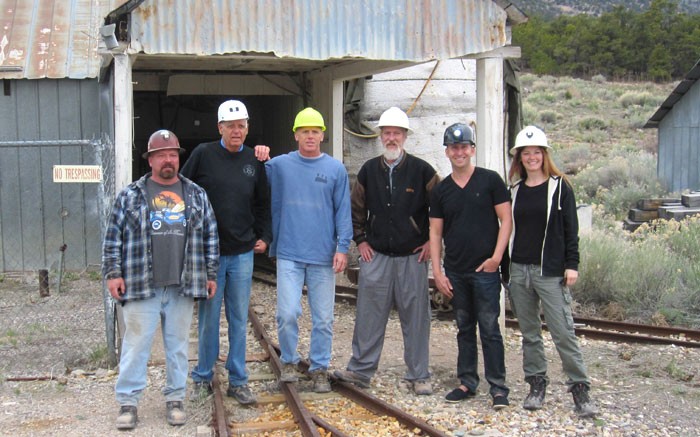
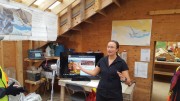
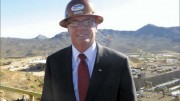
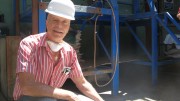
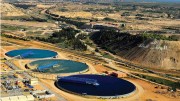
Be the first to comment on "Western Pacific bets on the Deer Trail mine"